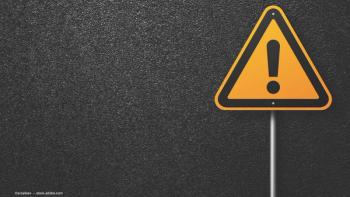
DQS drops relieve persistent dry eye after LASIK
The addition of diquafosol tetrasodium (DQS) to a regimen of artificial tears and sodium hyaluronate helped relieve the symptoms of persistent dry eye in patients who had undergone laser in situ keratomileusis (LASIK), according to recent research.
The addition of diquafosol tetrasodium (DQS) to a regimen of artificial tears and sodium hyaluronate helped relieve the symptoms of persistent dry eye in patients who had undergone laser in situ keratomileusis (LASIK), according to research published in
Researchers at Miyata Eye Hospital, Miyazaki, Japan, conducted a noncomparative case series of 30 eyes of 15 patients who had persistent dry eye symptoms for more than 12 months following LASIK. The patients' symptoms had not improved with artificial tears and sodium hyaluronate.
DQS 3% eye drops, 6 times a day for 12 weeks, was added to the patients' artificial tears and sodium hyaluronate therapy. The researchers monitored best-corrected visual acuity and measured a number of dry-eye parameters, such as tear secretion, tear break-up time, and fluorescein and lissamine green staining scores on the cornea and conjunctiva before the initiation of DQS therapy, and at 1, 4 and 12 weeks after the addition of DQS. The patients also were given a subjective questionnaire of 14 symptoms before and after the 12 weeks of DQS therapy.
The addition of DQS did not change the patients' best-corrected visual acuity and tear secretion. However, the fluorescein and lissamine green staining scores significantly improved after 12 weeks of the DQS treatment, as did the patient-reported symptoms of fatigue, dryness, grittiness, discomfort, difficulty in reading and discomfort within the area of dryness.
To read an abstract of the study, click
Newsletter
Get the essential updates shaping the future of pharma manufacturing and compliance—subscribe today to Pharmaceutical Technology and never miss a breakthrough.















































